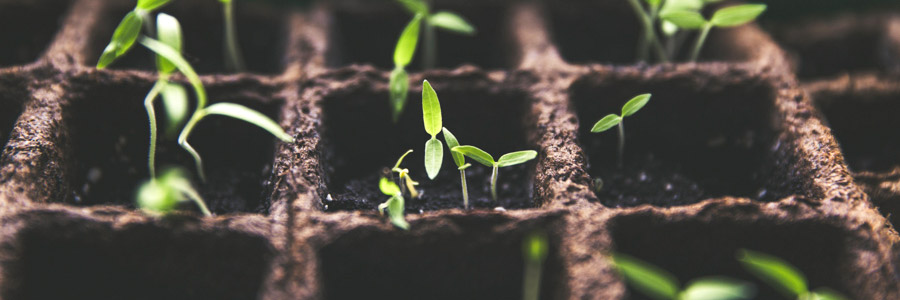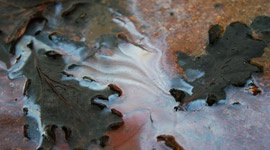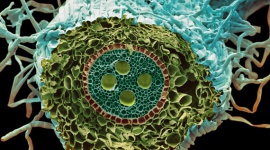Propagation
By Geary Coogler BSc Floriculture / Horticulture
Types of Propagation
Sexual propagation is the term used where two parental lines are involved that form an embryo. It may or may not be encapsulated in what is known as a seed coat and involves the fusion of two separate gene sets. Asexual propagation is where a piece of the original plant is used to form an entirely new plant with the same tissue set as the original plant, including any localised mutations or specialties. Another type of asexual reproduction is cloning where the gene set from a single cell that is undifferentiated into any plant parts is forced into differentiating into plant parts so that it and all subsequent plants started from this cell are exactly the same gene sets in every way. This is known as cloning usually involving a process called Tissue Culturing.
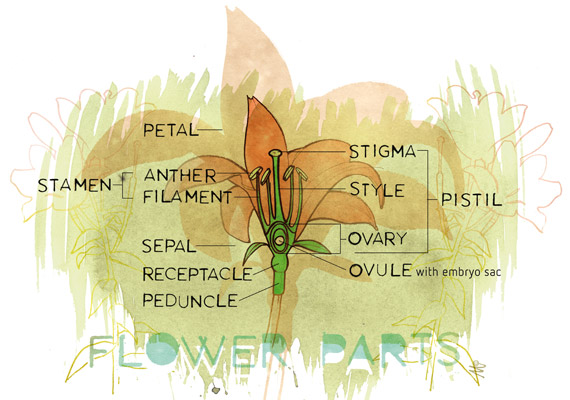
Figure 1: Flower parts of a complete flower (male and female parts visible)
Sexual Propagation
Sexual reproduction in all plants involves the fusion of two different sets of genes, sometimes from separate parents and sometimes from the same parent. In the Angiosperm division of plants (flowering plants such as tomato, cacti, grasses, and so on), the largest most diverse group, these gene sets in the embryo are encapsulated in a seed for protection. In Gymnosperm plants, this new future plant is not and remains naked to the elements (pine, spruce, other evergreens). In flowering plants this involves the male contribution (pollen) from a different or same source plant (monecious or dioecious) being transferred to the female part of the flower (known as the Ovary), which contains the egg or Ovule. The gene sets fuse and a new seed is formed. (see Fig 1)
This process allows for the greatest amount of genetic diversity possible. All cells from which the half set of chromosomes (the gene structures), from which the pollen and ovule arise, have two sets of the same genes. For instance petal shape could be a single gene set, and the plant cell will contain two of these, even though one set may be different in what shape it may produce. At the formation of the ovule or pollen grain one set will be in one ovule or pollen grain while the other will be in a different ovule or pollen grain. The one that fuses with the other at pollination becomes a part of the new plant and is passed on. Thus the new plant is a part of both and not of a single set of genes or of a single parent gene set. (see Fig 2) The problem is, unless it is a very stable gene set, the grower never knows exactly what they will get until the seed germinates and grows. These differences can be anything seen or not seen.
Two seeds produced apples may look and grow identical but one set of fruit may be small green and bitter while the other is big, red and tasty. Many more ultimate plants can be produced with seed, and they can initially be stored for periods of time with minimal concern, but the grower sometimes has no idea of exactly what they are getting. Additionally, unstable gene sets on many varieties, even though always produced from the same parent lines, will produce as many gene sets as seed. The fact that most plants can be propagated from cuttings or divisions greatly improves a grower’s chance at producing successful and similar plants and crops.
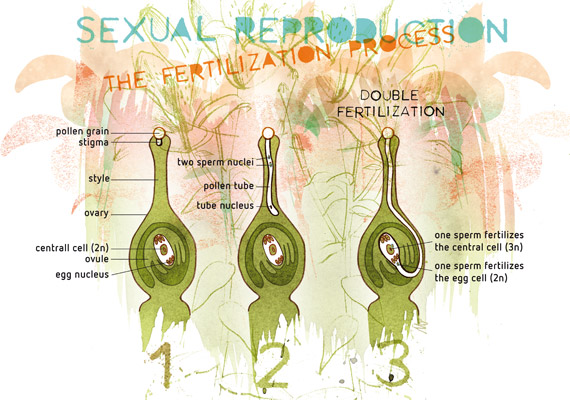
Figure 2: Sexual Reproduction – the Fertilisation process
Asexual Propagation
Asexual reproduction is the utilisation of an existing plant part or full gene set to produce a similar or same plant. That covers a bunch of ground. To facilitate this discussion, the subjects will be split up and dealt with separately. The emphasis of this article is in cuttings, the most important method for propagation as used by growers to ensure consistency in crops. To begin this conversation, it is important to keep a few things in mind.
1. One thing to remember is that the genes in any cell, at any time, can mutate. This is a process by which outside influences such as: high energy light, cell division, chemical processes, time/ age and many other ways, affect the expressed gene sets. The result is that seldom does the gene set in the plant cells at the tip resemble, with 100% accuracy, the cellular gene set as a fertilized ovule. This can lend itself to many new expressions such as: better fruit, different leaf form, size, colour patterns/ variegation and so on.
2. Another thing to remember is that putting roots on a cutting is simply continuing the plant development away from the original plant stock. Cells away from specialised areas inside the meristems of a plant have a specialisation and a purpose. A leaf epidermal cell will divide into the same type cell but, in these specialised areas, cells in new plant parts take on their specialisation as they are laid down, though start as undifferentiated cells (or collectively, tissue). At some point, a change has to occur to get tissue to change and become undifferentiated once more, in order to become new roots or entire new plants.
3. Finally remember that gene sets never reset the clock on the time or age. This can be extended but there remains a limit. For example an apple tree may have one limb that produces a slightly better fruit from a mutation in the axillary bud it originated in. If a bud is taken and propagated by cutting, then the new tree will carry the same good fruit and can be propagated into hundreds and thousands of new trees. The age of the gene set will always remain timed, based on that original tree gene. It can be extended but a couple things happen over time: the genes become tired and more mutated, and sooner or later the entire line will die out at roughly the same time.
Cloning
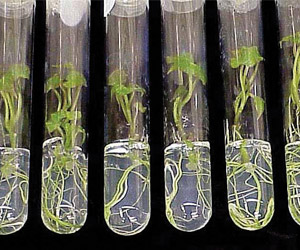
Figure 3: Finished Tissue Culture plantlets
ready for transplant
The taking of any vegetative propagule can be argued to be the cloning of the original plant so there should be no difference in terminology. However because the horticultural world treats the two areas as distinct, and because there are true minor differences, we will speak to the two basic forms of vegetative reproduction.
Cloning is the process where a piece of tissue is taken from a viable area of a mother stock plant. It is then forced back to an undifferentiated state (callus), where it is then broken up into individual cells and these cells all being almost a 100% gene match, and then allowed to grow into more callus. The callus is then introduced to certain ratios of minerals, hormones, enzymes etc. and produced into a new plant, each virtually identical to the others. This process is intense and subject to many failures along the way.
In the process, it tends to produce enormous numbers of new plants. This means that it is great for producing commercially needed numbers to keep costs lower, but expensive and overpowering for smaller gardens.
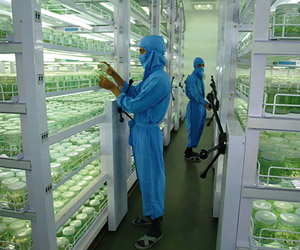
Figure 4: – Incubation rooms with technicians
There are many variations on this process, all considered Tissue Culture, but the above serves as an easy example. (See Fig 2) Virtually all plant parts have or might have some importance or place in this technique. Meristem culture, or micro-cuttings is more like a cutting but only the tip meristem with a couple new axillary buds are excised from the plant and they then grow roots and a new plant.
The advantages are numerous, such as virus or disease indexing, but expensive is the word. Most importantly, all plants respond independently to this technique, what works on one species does not on another.
A tremendous amount of research has and still goes into developing: the profiles and techniques needed, correct chemical balances and even the correct timing for things to occur. The equipment requirement to conduct this propagation method is extensive and has to be totally sterile. There remains easier ways. (See Fig 3 and 4)
Vegetative Cuttings
The method of choice (in cases where it is possible as not all plants lend themselves to propagation by tip or leaf/eye cuttings) is the taking of cuttings. Vegetative propagation includes plants that arise from adventitious buds on the root itself and the root is divided to produce separate plants (division), or other vegetative methods. It also includes the sectioning of stems to include active leaves, tip or leaf/ eye cuttings, or dormant apical or axillary buds known as dormant cuttings. The idea is that the plant with an active growth tip meristem, axillary bud, or dormant bud will either root through the change of epidermal tissue or callus formation at the cut, into a root meristem and form a new connection to the vascular tissues. This is also possible through specialised structures such as aerial roots/holdfasts, or arising from the leaf node tissues to produce a new plant and root system.
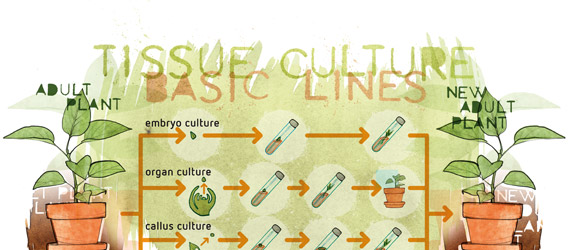
Figure 5: The basic idea in Reverse Osmosis is to pass water through a membrane leaving almost everything behind. Plants do this by natural forces involving gradients. This machine does so by forcing the water through the membrane.
Many possibilities exist and all plants can be different. Some plants will also respond in multiple ways. (See Fig 6 and 7) When this new root systems develops, if the plant has an active more centralised crown, at the junction of the root vascular system and the top vascular system a new crown is formed and must be dealt with correctly. Some plants have less identifiable crowns or have the ability to root readily along the stem, in which case are less concerning. Crowns tend to be areas of high-energy use and can require larger amounts of Oxygen to function correctly. While the cutting, when disconnected from the root tissue will usually put on new roots, these new crowns will not respond well to being buried deeply and will generally not root or die before new roots form, causing issues with the top portion at the least.
These activities are triggered to occur by combinations of triggers such as light levels (or lack thereof), hormone accumulation and/ or disappearance, starch accumulation and other activities including stress. Some readily rooting plants such as Ficus spp. will root from the stem and nodes when the humidity is high and light levels lower. Aerial roots are produced that grow to the ground, converting from an aerial root into a normal root to help supply the needs of the plant. The roots that do form tend to be designed for the environment in which they arise such as in water based systems or soil based.
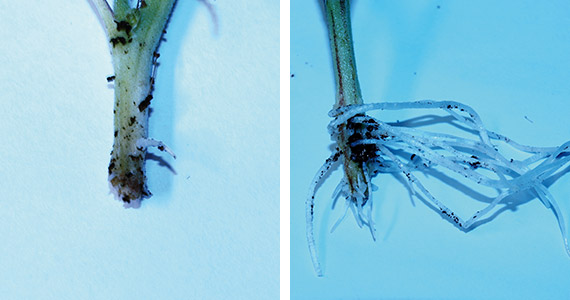
Figure 6 (left): Adventitious root initial from epidermal tissue change as well as Callus root initials at cut end of propagule - Figure 7 (right): Adventitious and Callus roots form from the initials
Conclusion
Plants tend to lend themselves to being propagated. It is as if they figured out how to keep a single copy of their genes going forward when it is really a survival mechanism from long ago perhaps. To maintain all the desired characteristics, the only true way to achieve this is through vegetative propagation. It is possible to stay close with stable gene seeds that are non-hybrid, but still a risk of mutation remains much higher. Also, a vegetative propagule tends to reach maturity faster as its tissues remaining at the same maturity of the stock or mother plant, for example juvenile verses adult tissues.
In the end, there are many techniques to use in propagation. They can all be difficult or easy so the grower must select the best, most practical and successful way for accomplishing their needs based on the plant, as all will be different.
